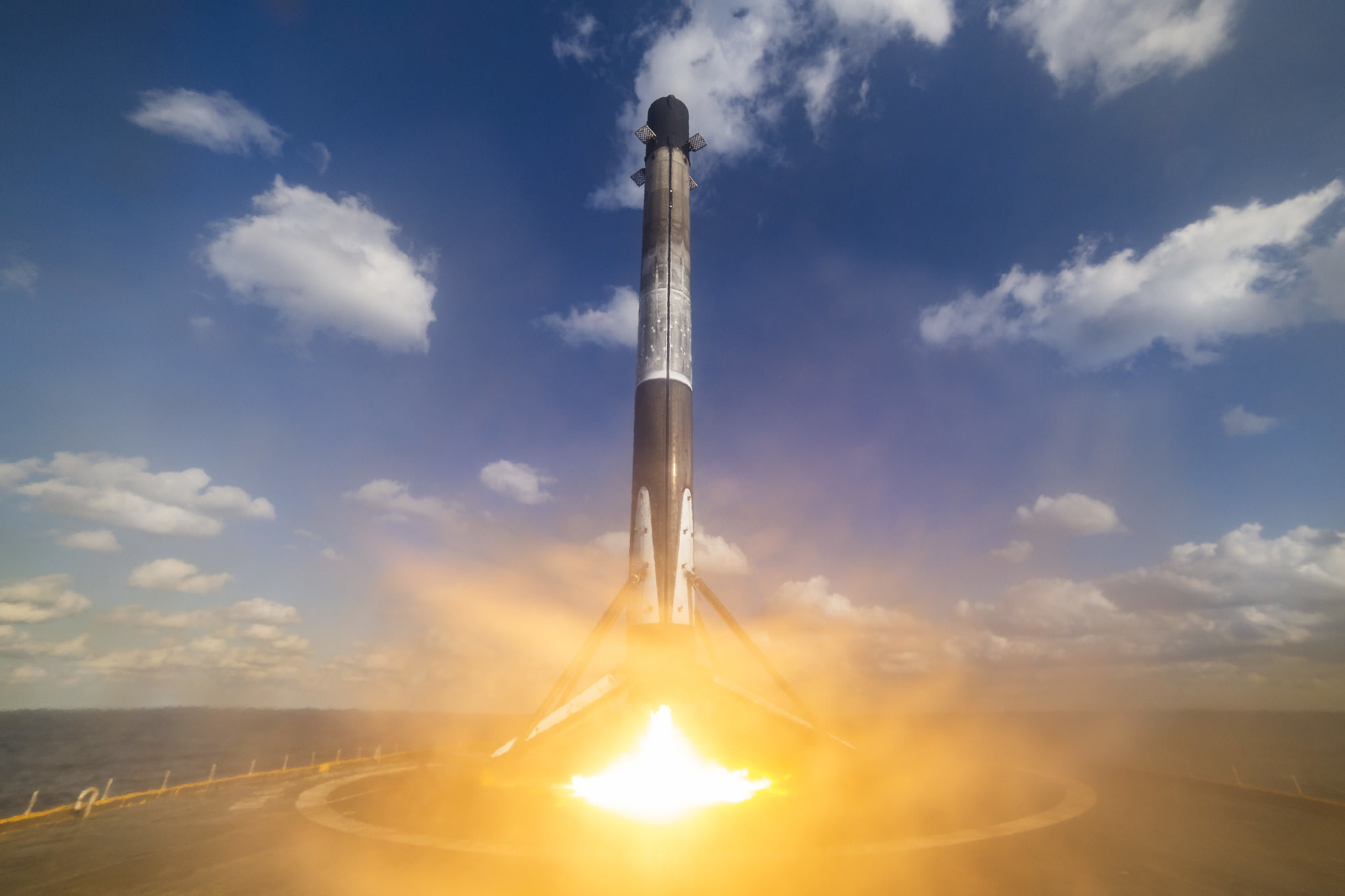
SpaceX lands its Falcon 9 rocket booster after launching a Starlink mission on Aug. 18, 2020.
SpaceX
SpaceX took another step in its quest to push the boundaries of reusing rockets on Tuesday, landing one of its boosters for a record sixth time.
Elon Musk’s space company landed the booster of its Falcon 9 rocket on a floating platform in the Atlantic Ocean a few minutes after it launched the company’s latest Starlink mission from Florida. The booster is the bottom portion of the rocket that houses 9 of its engines, standing about 160 feet tall on its own.
The landed Falcon 9 rocket booster from SpaceX’s Demo-2 crewed mission returns to Port Canaveral in Florida.
SpaceX
The landing was a secondary goal for the mission. The company also achieved its primary goal of launching and deploying 58 Starlink satellites and 3 Planet SkySat satellites.
The mission represents the company’s 95th successful launch since its founding in 2002. To date, SpaceX has landed rocket boosters 58 times and has re-used boosters for 40 missions.
SpaceX’s current fleet of rockets are partially reusable, with the company aiming to land the boosters and recover each half of the nosecone after launches. Together, the booster and nosecone make up about 70% of the total cost of a new rocket. The company prices its Falcon 9 rockets at upwards of $62 million per launch, although its leadership has said reusing rockets “can bring launches down to below $30 million per launch.” SpaceX is also developing a fully reusable rocket called Starship that it plans to use to replace its existing fleet.
After Falcon 9’s most recent significant upgrade in May 2018, Musk touted the rocket as being “capable of at least 100 flights.” The company has since pared down that goal, as SpaceX president and COO Gwynne Shotwell said in March that “I don’t actually think we’re going to need to fly more than 10 times.”
The company’s competitors have remained skeptical of its claims of how much money it is saving by reusing rockets. SpaceX’s competition both domestically and abroad use expendable rockets, which break up in the ocean or atmosphere after each launch. Tory Bruno, CEO of SpaceX’s largest U.S. competitor United Launch Alliance, said earlier this year that his company estimates that making reusing rockets economically feasible requires “around 10 flights as a fleet average to achieve a consistent breakeven point.” That assessment remains a point of contention for Musk, who blasted ULA “as a complete waste of taxpayer money” because its rockets are not reusable.
Subscribe to CNBC PRO for exclusive insights and analysis, and live business day programming from around the world.



